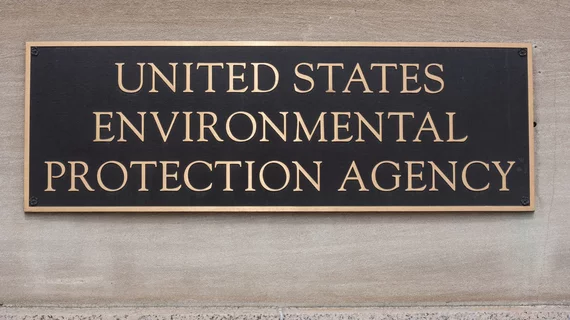Radiology society says EPA proposal could pose ‘significant disruptions’ to patient care
A new proposal from the Environmental Protection Agency could pose “significant disruptions” to patient care, the Society of Interventional Radiology said Tuesday.
The EPA first introduced the new standards for healthcare facilities in April, hoping to slash ethylene oxide, or EtO, emissions by 80%. Its goal is to protect healthcare workers exposed to this colorless, carcinogenic gas when sterilizing medical products.
However, SIR, the American College of Cardiology and several other medical societies note that ethylene oxide is vital for the proper disinfection of catheters, stents, guiding sheaths and other supplies. Interventional radiologists have limited alternatives, some of which are “suboptimal.”
“We are concerned that the proposed rule as written could result in significant disruptions to the medical supply chain and our ability to care for our patients,” the Society of Interventional Radiology and others wrote in public comments submitted June 27, the final day to do so. “We urge the EPA to work closely with the FDA and relevant stakeholders to implement updated national standards to reduce EtO emissions that provide sufficient time and flexibility for sterilization facilities to comply in order to ensure continued patient access to critical devices.”
The societies emphasized that they support efforts to reduce community exposure to EtO. But they believe any proposal needs to be balanced to ensure the “supply chain of critical medical devices and patient care are not put at risk.”
Device-maker lobbying group AdvaMed also criticized the proposal on Tuesday, estimating that it could reduce sterilization capacity by 30% to 50% nationwide. “As written, we could see significant shortfalls and a risk to patient access,” CEO Scott Whitaker said in a statement.
Back in April, the EPA said its proposals were informed by collaboration across several federal entities including the FDA and CDC. The agency estimated that the additional lifetime cancer risk associated with continuous workplace exposure to EtO is between 1 in 25 and 1 in 12 for workers who use it in healthcare facilities. But this can be reduced through measures such as wearing personal protective equipment. Under the proposal, facilities would be required to comply with new requirements within 18 months, representing an expedited timeline, the EP noted.

